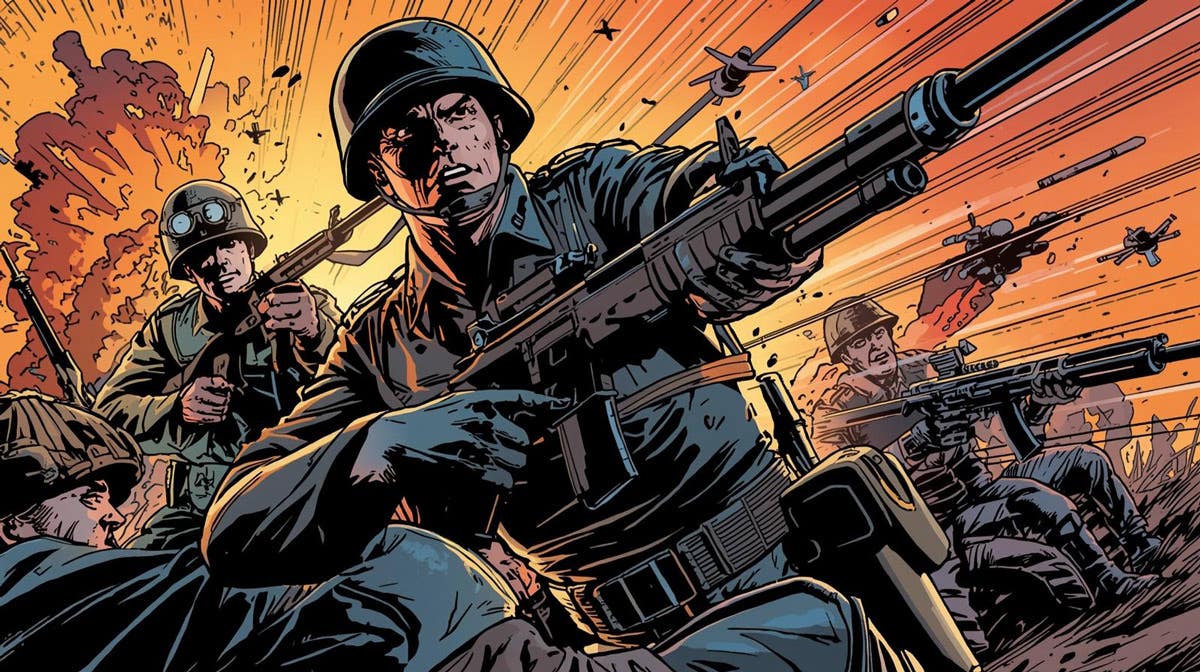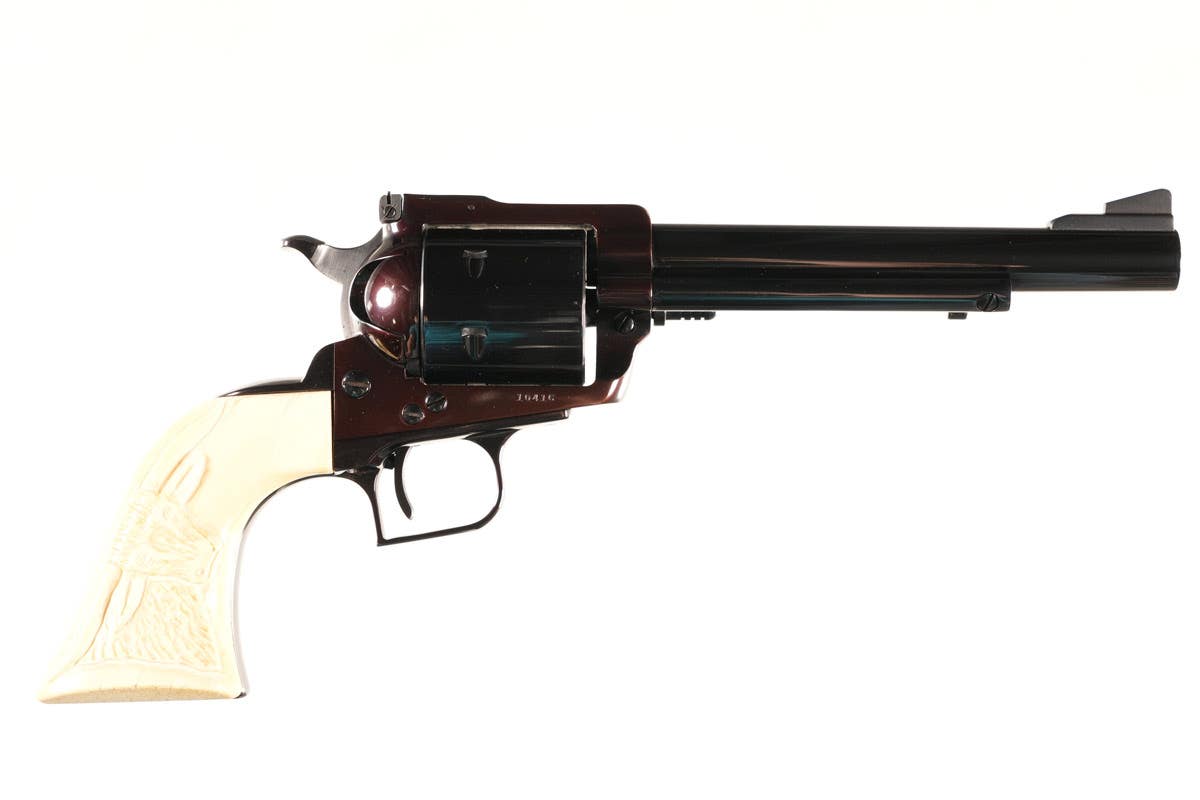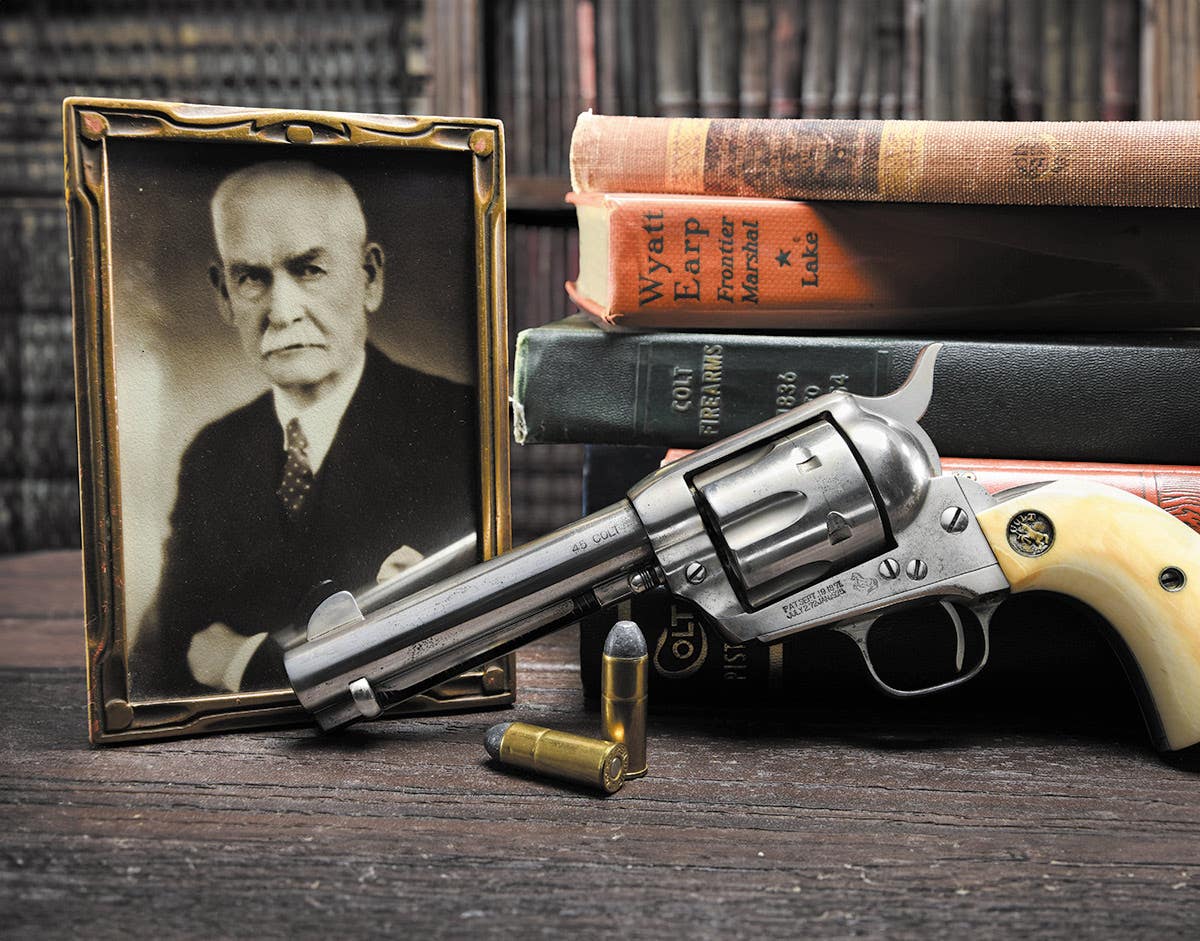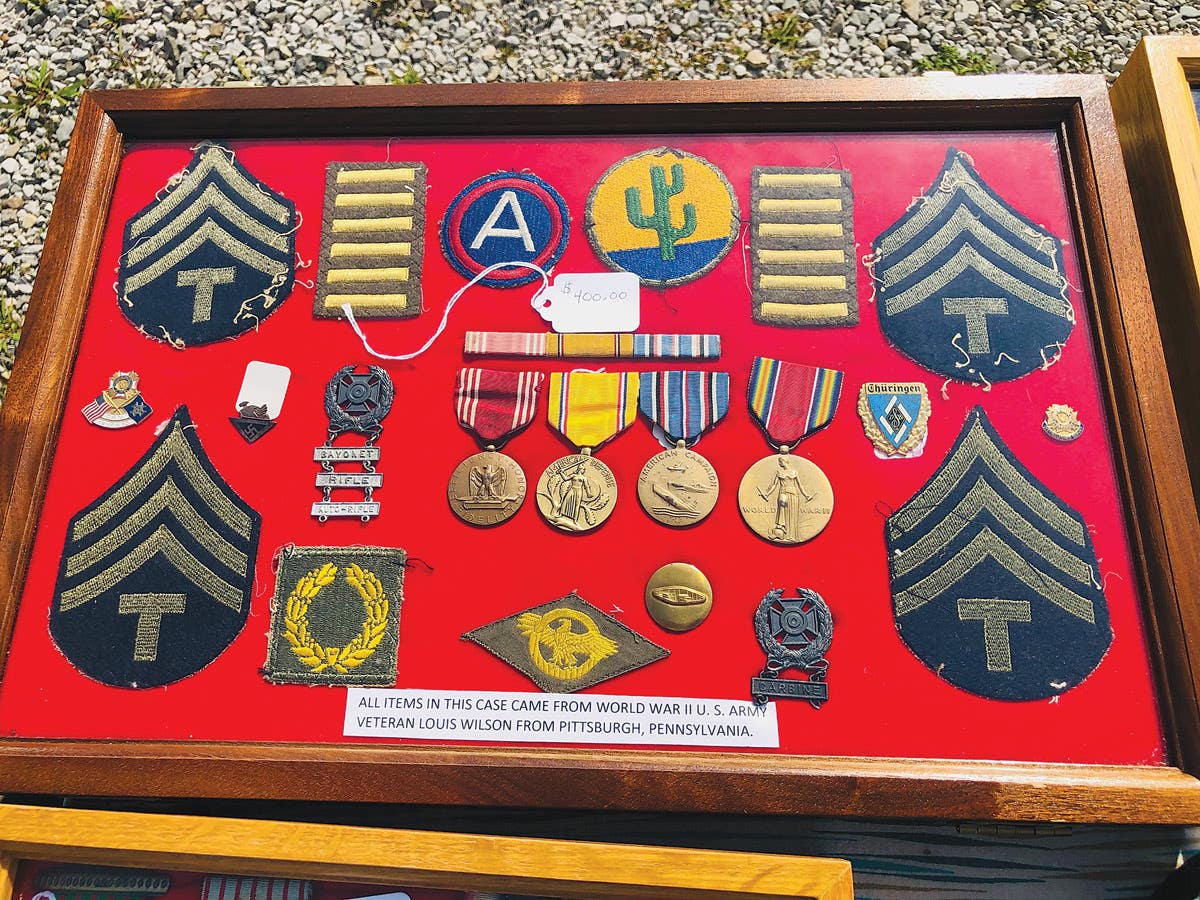Fight the Mold!
Collecting old military papers, photographs, books, and uniforms is a fun and exciting hobby. Unfortunately, one of the largest problems collectors face is mold. Don’t be so quick to throw them away– they may still be salvageable.
Collecting old military papers, photographs, books, and uniforms is a fun and exciting hobby. Unfortunately, one of the largest problems collectors face is mold. Often, papers and manuals are stored in damp musty areas where mold can attach itself to the papers. Dust and dirt can come from anywhere and discolor paper. Don't be so quick to throw them away-- they may still be salvageable.MINOR MOLD CAN BE HANDLED
Minor infestations of mold can be fixed rather cheaply. But before attempting any conservation, always think a step ahead on what is being done.
This book about Civilian Military Training Camps has suffered water and mold damage. Luckily, the mold is not too extensive and should be able to be killed with the deep freeze method. Unfortunately, the discoloration due to water damage is permanent.
First of all, determine if the mold is just on the outside of the book or papers or is it inside as well. If the mold is on the inner pages of the book, a person will have to go through an extra step to get rid of the mold. If the mold is only on the outside that makes things a lot easier.
The conservator is wearing gloves to keep from coming in direct contact with the mold. Here, the damaged book is sealed in a Zip-lock style bag.
To deal with external mold, all that is needed are a plastic bag or even a Ziploc bag large enough enclose the book. Make sure all the air is pressed out of the bag and seal it tightly (this keeps mold spores from contaminate anything else). Place it in a deep freeze or freezer for seven days. This may seem like a long time but this ensures that the entire mold is killed. After the seven days simply remove the book from the bag and gently wipe the excess mold off with a slightly damp and soapy sponge.
In cases where there is a thick layer of mold, a person may have to wipe off the excess mold and return the book to the freezer for seven more days. This will make certain that the mold is killed.
If the book has mold on inner pages, use the same process but prop the book open to the moldy pages. The cold will penetrate and kill the mold.
Placing the moldy surface in direct sunlight will also kill the mold. Do not leave it out for more than a couple hours at a time because the harsh UV rays from the sun can fade or damage your book. The freezer process takes longer but is a safer option.
MOLD ON UNIFORMS
The freezer process will work on most anything that has mold on it. For example, a uniform can become moldy if left in a damp environment like a basement. If it is a heavy mold infestation, use vacuum hose which its tip has been covered by a nylon screen (do not use a wire screen--the wires may snag on the uniform). One can easily use duct tape or any other type to attach the screen to the tip. This keeps the cloth from being sucked into the hose.
This ca. 1950s U.S. Air Force wool coat appeared to be in good condition. Upon closer inspection, however, it was found that it had mold on the lower left skirt.
The vacuum should be one with a HEPA filter. This will ensure that when vacuuming the extra mold off the uniform, no mold spores are being blown into the air and spread to infest other things like other uniforms or even a house. Wear a good quality mask. Even with the vacuum running there is a chance of mold spores being introduced into the air.
A section of vinyl screen used in windows and doors is the best to use when covering the end of a vacuum hose. This will keep the cloth from being sucked into the hose causing damage. The vinyl screen is better than wire because the wire can become frayed and snag on the cloth causing damage.
When finished vacuuming off the excess mold, simply place it in a plastic bag, force out as much air as possible, tie it securely and put it in the freezer for seven days. If you must use a kitchen freezer, remove all food because of the chance of mold coming in contact with the food contaminating it. Businesses like Wal-Mart, Target or other department stores sell smaller freezers that could be used exclusively for killing mold or insect infestations in ones collection. It would be wise to purchase a freezer just for this process if you are a regular buyer of clothing or books that may have mold infestations.
View of Air Force coat being vacuumed. Notice the person is wearing white cotton gloves. This will help keep mold spores off your hands and spreading them where they aren't wanted.
If you are trying to kill mold from a thick and heavy garment like a coat, you may want to do the process twice: Once with the coat right side out and again with it inside out.
The freezer process is natural and doesn't use any chemicals. Individuals can purchase dry cleaning chemicals but they can be dangerous to the uneducated--they should be used only by a professional. Chemicals may kill the mold but could damage the uniform or other item if used incorrectly. Furthermore, the fumes may damage a person's lungs or eyes if the directions are not followed correctly.
KILL MOTH EGGS TOO
The freezer method can also be used to kill moth eggs. If a uniform has moth or insect damage, it is a prime candidate for the freezer treatment. As a reminder, always keep any recently purchased garments away from any others so there is no cross contamination of them.
After vacuuming, simply place the coat in a large trash bag, press out as much of the air as possibly. Tie tightly and place in a clean freezer as shown for 7 days. This will kill the mold.
Place the garment in a trash bag and tie it tightly. Then, set the bag in a deep freeze or freezer for 24-36 hours. Remove the garment from the bag and hang it (away from other items) for approximately 24-36 hours. Repeat the process put it in a trash bag and into the freezer for another 24-36 hours. This should kill any moth eggs in the item. Essentially, what has been done is to interrupt the cycle of the eggs. While the egg has a sort of natural anti freeze, it cannot be harmed in the freezer. By moving the garment in and then out of the cold, this throws off its cycle so it will hatch into larvae. By replacing it back into the freezer, this will kill the larvae that have just hatched.
STORAGE: PREVENTIVE MEDICINE
After killing the mold, you need to have proper storage to keep it from reoccurring. Large acid free boxes and acid free containers for books can be purchased through archival companies like Light Impressions (800.828.6216); University Products (417.532.3372) and Gaylord (800.448.6307).
A wooden hanger with lower section covered with non-bleached muslin cloth is a good way to store heavy garments (when flat storage isn't possible). This arrangement can be used to hang trousers. T o hang a coat or shirt, simply cover the upper section. This also provides support for the material as it hangs on the hanger.
Uniforms can be stored in a closet but a few precautions should be done first. Make sure there are no insect or mold in there. A person doesn't want to go through the process of getting rid of them twice. Also, make sure the closet can have good air circulation. This will help keep down the chance of mold infestation.
Finally, purchase non-bleached muslin from Wal-Mart, Hobby Lobby, or other cloth supplier. Non-bleached muslin is a cotton cloth that has not been bleached or treated with chemicals. It is superb for making garment covers for uniforms and other old clothes.
Large acid-free garment boxes can be purchased through companies like Gaylord and Light Impressions. They usually come in quantities of 10 for a little over $250. This sounds expensive but they are the best way to store antique cloth. Note how the Air Force overcoat has not been folded but, rather, laid gently inside. This will help ease any pressure point on the material and not cause breaking later on.
When hanging the uniform do not use a metal hanger. The metal may rust if conditions become too humid. Metal hangers are too narrow to properly hang a uniform. The best types are wooden hangers with wide shoulder areas. This will help support the cloth and keep the pressure off the shoulders. A person can go one step further and wrap the hanger with quilt batting and cover that with non-bleached muslin. This will provide more support for the uniform.
CONSERVATION IS A COMMITTMENT
Remember, "always think a step ahead." It is always to better be safe than sorry. These steps and tips are for basic cleaning and preservation. As mentioned earlier, do not do something to photos, garments, or documents that cannot be undone. However, these hints and tips will help your personal collections to last for many years.
When in doubt, always contact a professional conservator. To find a conservator in your area, contact the American Association for State and Local History 172 Second Avenue North, Suite 202 Nashville, Tenn. 37201 or the American Association of Museums, 1225 Eye Street, N.W., Washington D.C. 20005.








